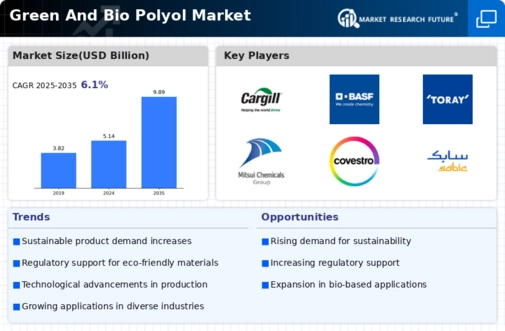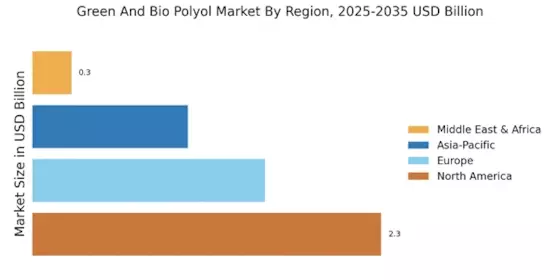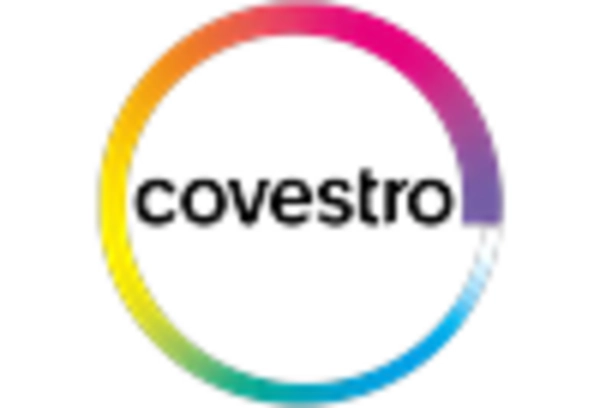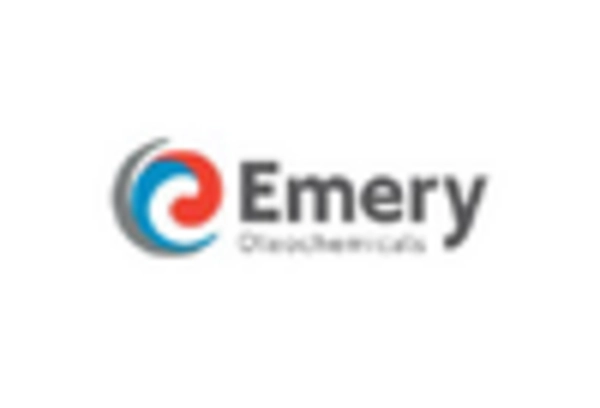Rising Raw Material Costs
The Green And Bio Polyol Market is also influenced by the rising costs of traditional raw materials, particularly petroleum-based inputs. As prices for these materials fluctuate, manufacturers are increasingly turning to bio-based alternatives, which can offer more stable pricing and supply. The shift towards bio-based polyols not only mitigates the impact of volatile oil prices but also aligns with sustainability goals. Market analysis reveals that the cost of bio-based polyols is becoming more competitive, making them an attractive option for manufacturers. This economic factor is likely to drive further adoption of green materials within the Green And Bio Polyol Market.
Increasing Consumer Awareness
The Green And Bio Polyol Market is experiencing a notable shift as consumers become increasingly aware of environmental issues. This heightened awareness drives demand for sustainable products, including bio-based polyols. As consumers seek alternatives to traditional petroleum-based products, manufacturers are compelled to innovate and offer eco-friendly solutions. Market data indicates that the demand for bio-based materials is projected to grow at a compound annual growth rate of approximately 10% over the next five years. This trend suggests that companies focusing on sustainability may gain a competitive edge, thereby influencing the overall dynamics of the Green And Bio Polyol Market.
Government Incentives and Policies
Government incentives and supportive policies play a crucial role in shaping the Green And Bio Polyol Market. Various governments are implementing regulations that promote the use of renewable resources and sustainable practices. These policies often include tax breaks, grants, and subsidies for companies that invest in eco-friendly technologies. As a result, manufacturers are more inclined to develop and market bio-based polyols. Recent data suggests that regions with strong governmental support for green initiatives are witnessing faster growth in the bio-polyol sector. This trend indicates that regulatory frameworks are essential for the expansion of the Green And Bio Polyol Market.
Technological Innovations in Production
Technological advancements are significantly impacting the Green And Bio Polyol Market. Innovations in production processes, such as enzymatic synthesis and fermentation technology, are enhancing the efficiency and cost-effectiveness of bio-polyol manufacturing. These advancements not only improve yield but also reduce the environmental footprint of production. Market Research Future indicates that companies adopting these technologies are likely to see increased market share as they can offer high-quality, sustainable products at competitive prices. The ongoing evolution of production techniques is expected to drive growth and innovation within the Green And Bio Polyol Market.
Growing Applications in Various Industries
The versatility of bio-based polyols is expanding their applications across multiple industries, thereby driving the Green And Bio Polyol Market. These materials are increasingly utilized in sectors such as automotive, construction, and furniture manufacturing. For instance, the automotive industry is adopting bio-polyols for producing lightweight and energy-efficient components. Market data shows that the demand for bio-based polyols in the automotive sector is expected to rise significantly, contributing to the overall growth of the market. This diversification of applications suggests a robust future for the Green And Bio Polyol Market as it adapts to various industrial needs.



















Leave a Comment